How to Spend 3 Days in Trier: A Complete Travel Guide
- 2 days ago
- 10 min read
Trier is unlike any other city in Germany, known for its ancient history. Every corner of the city reflects its Roman heritage. Trier was founded by the Romans over 2,000 years ago.

From landmarks like the Porta Nigra, Imperial Baths, and Constantine Basilica, the city has many UNESCO‑listed treasures. The city also has a vibrant university atmosphere and picturesque old-town streets.
One of the mistakes made by most tourists visiting Germany is that they often overlook Trier as one of the best cities to visit.

In 2018, we were traveling from Luxembourg to Düsseldorf. We missed my connecting train from Trier to Düsseldorf at night, and we had no option other than to stay in Trier.
Check out our blog about the Top 9 Things to Do in Limburg in Germany.
On my way to the hotel, we saw amazing architectural landmarks and decided that we would definitely visit the city again. Finally, in 2022, we returned to Trier to explore the city.

Before sharing tips on how to spend 3 days in Trier, let’s answer the first question: how to reach Trier?
How to reach Trier:
By Air:
Trier does not have its own airport, but there are several nearby options:
Luxembourg Airport (LUX) – about 40 km from Trier; the closest and most convenient airport.

Frankfurt-Hahn Airport (HHN) – around 70 km away; served by low-cost carriers.
Frankfurt International Airport (FRA) – approximately 170 km from Trier; it offers the most international flight options.
By Train:
Trier is well-connected by regional and long-distance trains within Germany and neighboring countries.
You can find high-speed and regional trains to Trier from Frankfurt, Cologne, and Saarbrücken. Additionally, there are frequent connections from Luxembourg City, and even international routes from Paris (via Luxembourg)..
Check out our blog on what to do in Heidelberg, Germany.

By Bus:
You can also take a FlixBus or other long-distance buses to reach Trier. These routes are usually more time-consuming but are a budget-friendly option.
Where to stay in Trier:
If you are visiting Trier for the first time, we recommend exploring the Old Town, including sights like the Porta Nigra, Trier Cathedral, Hauptmarkt, and the central train station. Here are a few hotel suggestions:
Park Plaza Trier
Hotel Deutscher Hof
Romantik Hotel Zur Glocke
Mercure Hotel Trier Porta Nigra
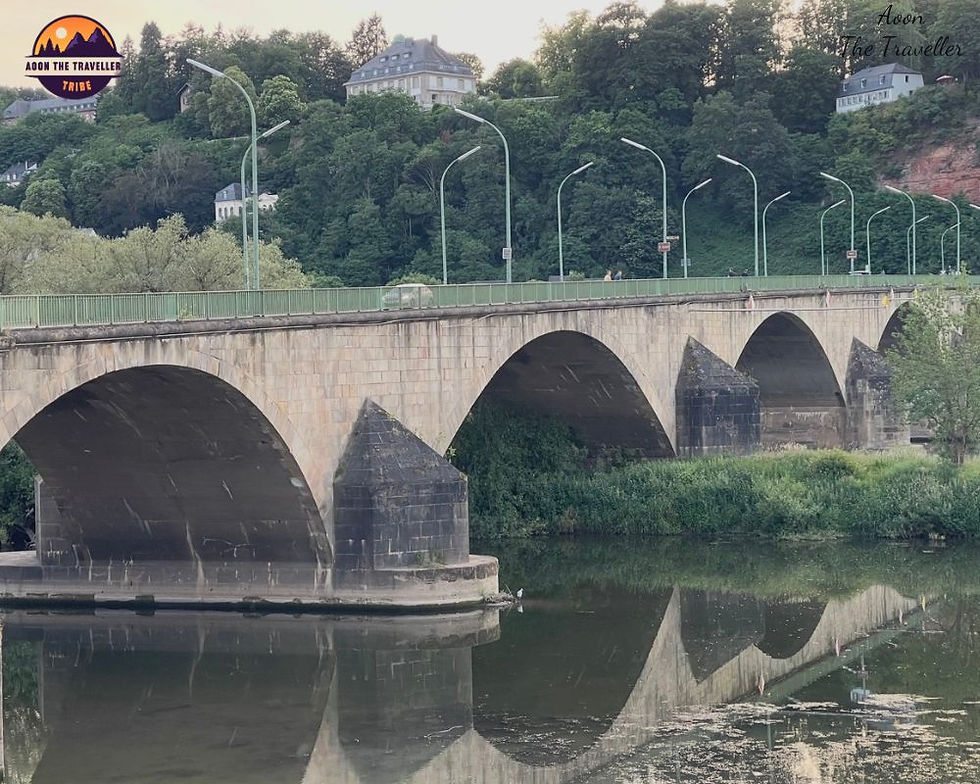
If you prefer a more peaceful location, consider staying near the Moselle River or up on Petrisberg Hill. Recommended options include:
Hotel Villa Hügel
Nells Park Hotel
How many days do I spend in Trier?
We would say you should at least spare 2 days, but if you want to explore all the tourist activities and enjoy the vibes, we recommend spending 3 days. In our case, we also spent 3 days.

In this blog, we would like to share the 12 must-do things in Trier to enjoy over 3 days.
Day 1:
1. Porta Nigra - the black gate of Trier:
You can start your day with the Porta Nigra, Trier’s most significant landmark. Known as the Black Gate of Trier, it is a Roman monument built around 170 AD and originally served as the northern city gate of Augusta Treverorum.
Check out the blog about 50 places to visit in Germany with Deutschland ticket.

It is the best-preserved Roman city gate and a UNESCO World Heritage Site. The city once had four gates, but this is the only one that has survived to this day.
The interesting fact is that Porta Nigra was constructed without mortar, but with large sandstone blocks. The gate is 30 meters high, and it has two massive towers and three levels. You can also go inside and explore the multiple floors, and also enjoy the view of Trier.

In the Middle Ages, the Porta Nigra was converted into a church by a Greek monk, and the church remained for centuries until Napoleon deconsecrated it in the early 1800s.
After exploring the Porta Nigra, you can visit the Trier Amphitheater.
2. Trier Amphitheater: With Roman Gladiator Reenactments:
The amphitheater was part of Augusta Treverorum, which is the Roman name of Trier. It is located outside the old city walls of Trier - the Trier Amphitheater was built in the 2nd century AD and used to host up to 20,000 spectators, making it the largest and oldest Roman arena in the north of the Alps.
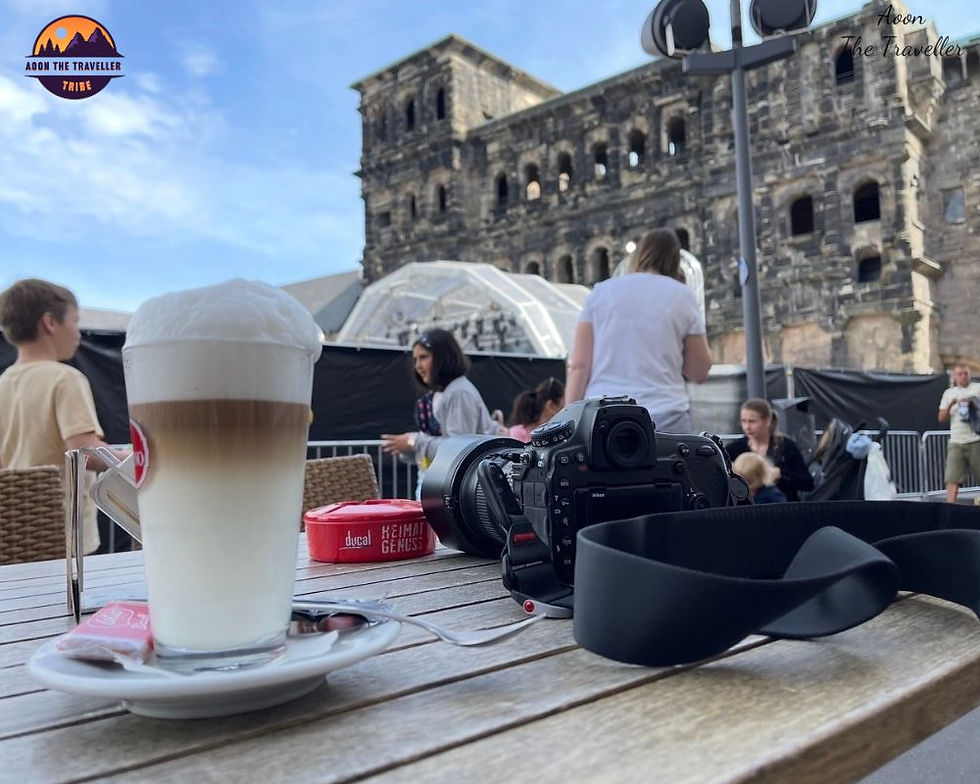
The Romans witnessed the bloody gladiator fights, animal hunts, and public executions. It has seating carved into the surrounding hillside.
Check out our blog on 25 Things to Do in Budapest.
You can walk through the tunnels where gladiators and wild animals once waited before entering the arena. You can also view the underground chambers and stand in the center of the arena floor, and take a moment to imagine the roar of the ancient crowd.

Apart from the tour, you can also experience the Roman Gladiator Reenactment, which is a special event that takes place in the summer months.
In this event, the professional dresses in authentic Roman costumes and armor and recreates the ancient battles while explaining Roman customs, military techniques, and the lives of gladiators. The show includes the immersive Roman experience.

After exploring the Trier Amphitheater, you can also visit the Trier Old Town.
3. Stroll the Old Town of Trier:
While you are in Trier, you should also explore the historic streets of the Old Town. You can see Judengasse, Simeonstraße, the main pedestrian shopping street, and Fleischstraße, which is lined with retail shops and cafés.
Check out our blog on How to spend 5 days in Rome, Italy.

You can also spend some time at the Hauptmarkt, a lively square with beautiful historic buildings. It features the Marktkreuz, a 10th-century market cross, and the Steipe House, adorned with statues of knights and former council chambers.

You can also relax at one of the outdoor cafés and soak in the atmosphere of the Old Town. You can also join a walking tour to learn more about Trier’s Roman, medieval, and modern history.

4. Karl Marx House:
The Karl Marx House is the birthplace of Karl Marx, the philosopher, economist, and political theorist, who was born on May 5, 1818. The house, now a museum, is located in the center of Trier and was originally built in the 18th century.
Day 2:
You can start your day by visiting Trier Cathedral.
1. Trier Cathedral (Dom St. Peter):
The Trier Cathedral, also known as Dom St. Peter, is the oldest cathedral in Germany, and it symbolizes Christianity in Germany. The Cathedral has its foundation back to Roman times. It has Romanesque, Gothic, and Baroque styles, which reflect its 1,700 years of history.
Check out our blog on How to spend 5 days in Rome, Italy.
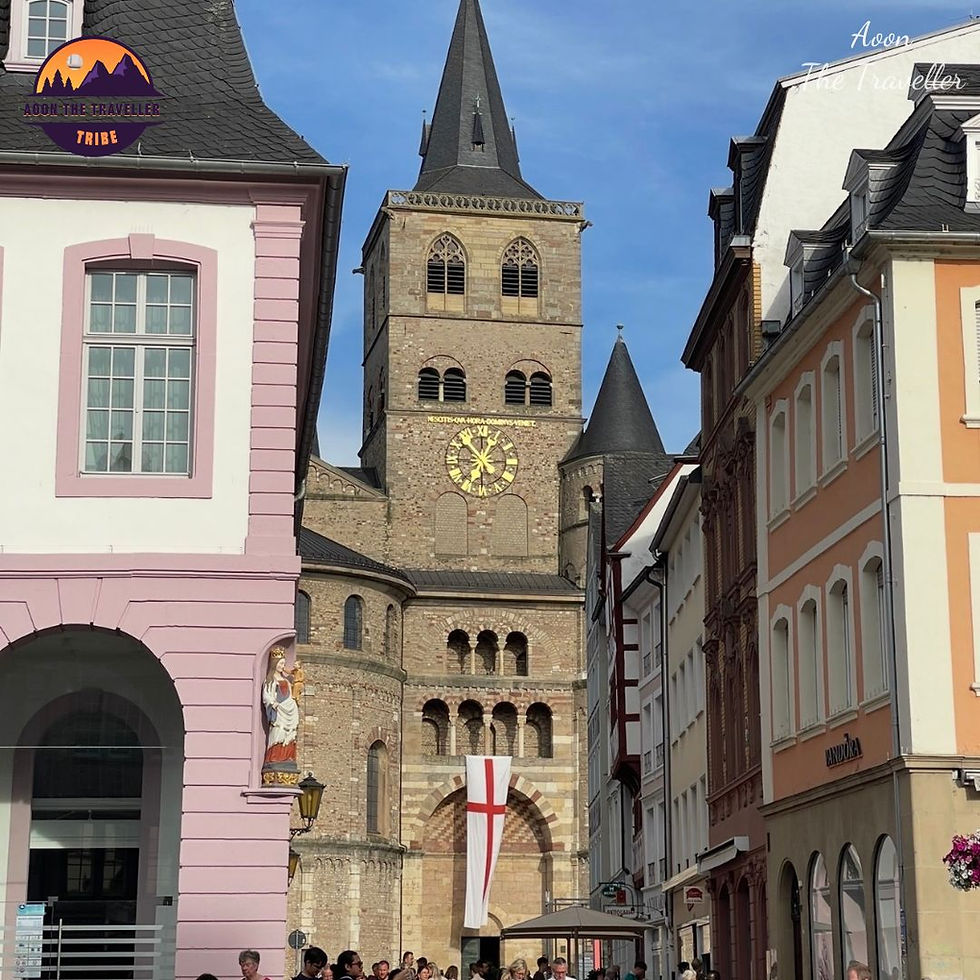
The cathedral was commissioned by Emperor Constantine the Great in the early 4th century, and it was built on top of a Roman palace.
Over the centuries, it was expanded, damaged, and rebuilt multiple times - you can also find large sections of the Roman core, including 26 26-meter-high.

The church also has a Holy Robe (Heiliger Rock), which was brought by St Helena, Constantine’s mother. And nowadays, thousands of pilgrims visit this from around the world. There is no entry fee, but it’s expected to be quiet and respectful during your visit.
You can visit Liebfrauenkirche, which is next to Trier Cathedral.
2. Liebfrauenkirche (Church of Our Lady):
The Liebfrauenkirche is one of the most important Gothic churches in Germany and undoubtedly one of the oldest. It is located right next to Trier Cathedral.
The church was built between 1230 and 1260 on the foundations of a Roman church, blending Roman and medieval architectural styles. Its floor plan is uniquely shaped like a twelve-petaled rose, symbolizing the Virgin Mary.
Check out our blog about the Best Towns on Rhine Valley.
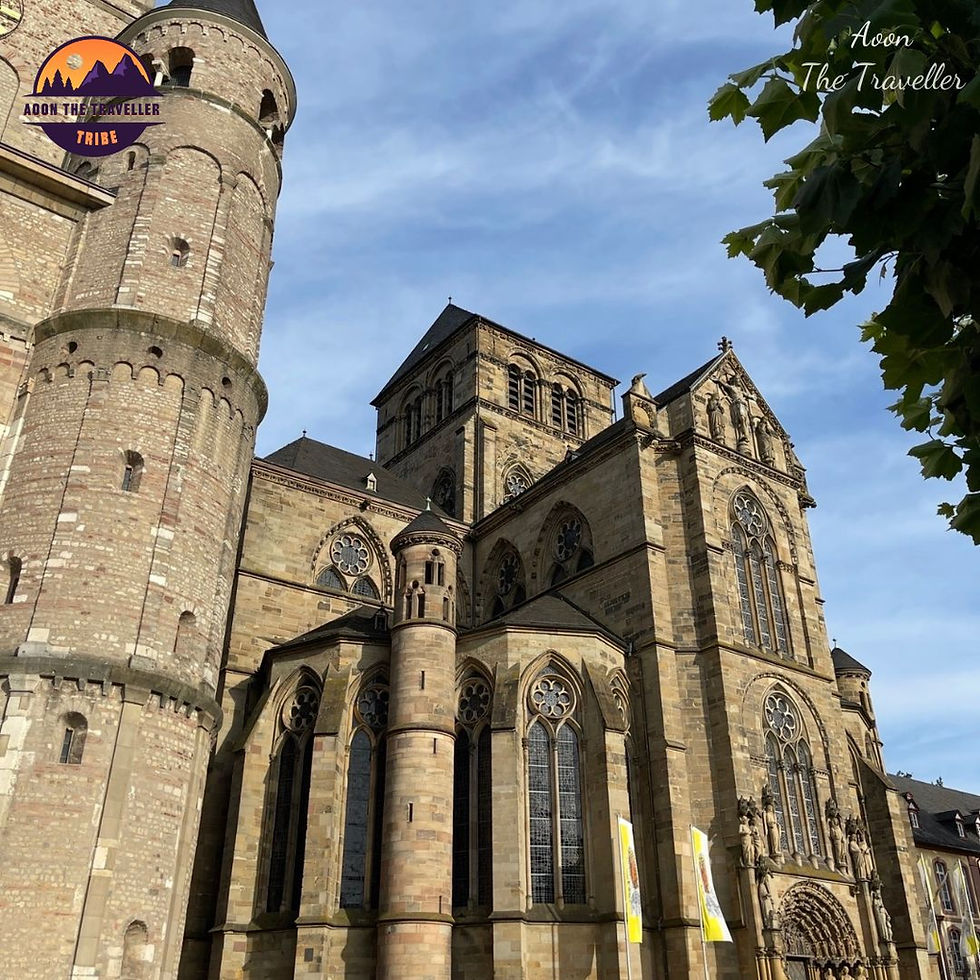
Inside the Liebfrauenkirche, you can admire stained glass windows, a vaulted ceiling, and Gothic tracery. It can easily be visited together with Trier Cathedral, and entry is free.
After that, you can move towards Imperial Bath.
3. Imperial Baths (Kaiserthermen):
The Imperial Baths (Kaiserthermen) are among the largest Roman bath complexes ever built outside of Rome. They offer a fascinating glimpse into the daily life, hygiene, and social culture of the Roman Empire.
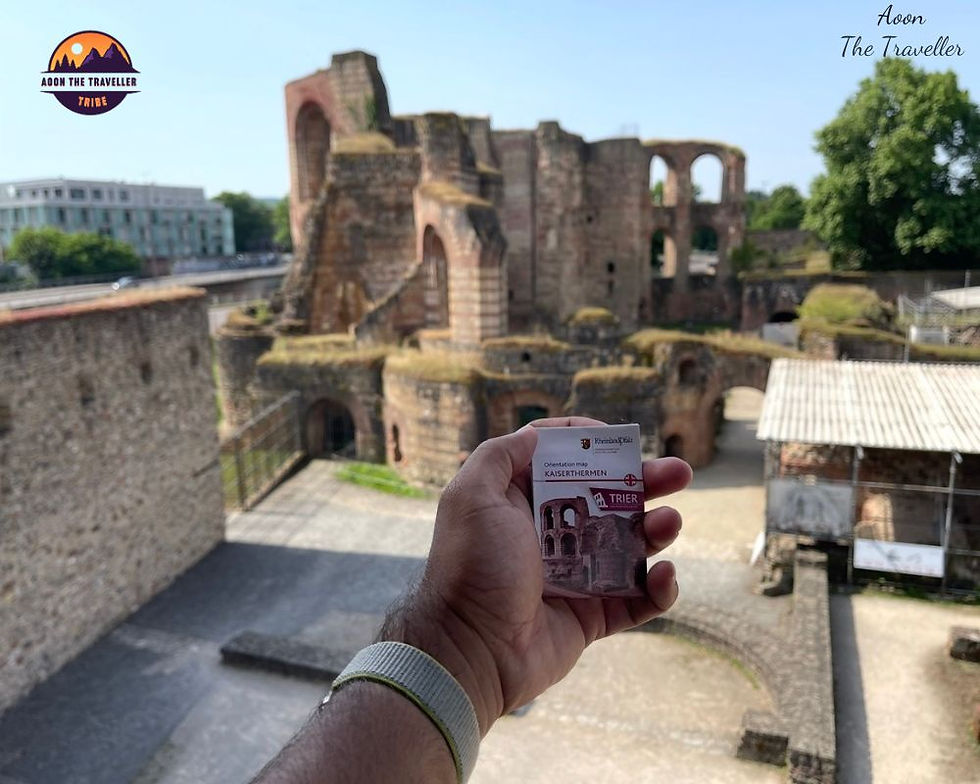
The baths were constructed in the 4th century AD, during the reign of Emperor Constantine, and were designed as a grand public bathhouse. The complex included cold, warm, and hot baths, saunas, and open-air courtyards.
Check out our blog about 13 must-visit towns in Germany with the Deutschland Ticket.

Visitors can walk through the underground tunnels and corridors, and even climb through the partially preserved walls of the ancient structure. The site is open year-round. Tickets can be purchased at the entrance, and it takes about one hour to explore the monument.
You can also visit the Basilica of Constantine.
3. Basilica of Constantine (Konstantinbasilika):
The Basilica of Constantine is one of Trier’s most important monuments, built in the 4th century AD during the reign of Emperor Constantine the Great. It originally served as a throne hall for the imperial palace complex and is the largest surviving single-room structure from antiquity.
The building symbolizes the power of the Roman Empire and was a key part of Constantine’s imperial residence — a true symbol of imperial authority.
Check out our blog about How to spend 72 hours in Vienna, Austria.

During the Middle Ages, the basilica was repurposed for various uses, including as a bishop’s residence and later as a military barracks.
In the 19th century, it was restored and converted into a Protestant church, which it remains today.

Visitors can admire the massive open hall, featuring the original Roman walls and modern stained glass windows. The basilica also hosts concerts and special events.
After that, you can move to the Palace Garden and Kurfürstliches Palais.
4. Palace Garden (Kurfürstliches Palais & Park):
The Palace Garden is one of Trier’s most beautiful places to relax and take a stroll. Located in the heart of the city, the garden offers serene greenery and a peaceful atmosphere.

The Kurfürstliches Palais (Electoral Palace) is a stunning Baroque-style residence that once served as the home of the Electors of Trier, powerful princes of the Holy Roman Empire.
The palace features a beautiful façade and grand staircase, though the interior is not open to the general public.
Check out our blog about 13 best things to do in Paris, France.
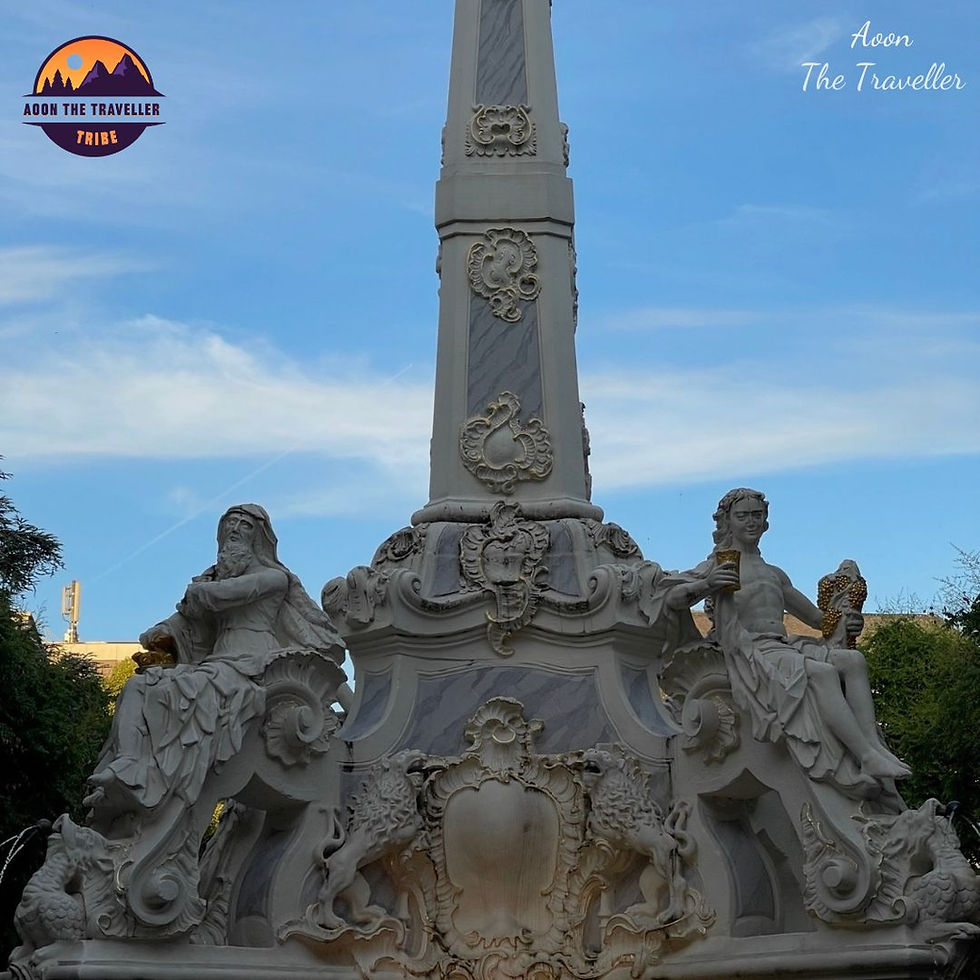
The Palace Garden is designed in the French Baroque style, with symmetrical flower beds, trimmed hedges, and gravel paths. You'll also find elegant fountains, classical statues, benches, and shaded areas — perfect for resting or enjoying some quiet time.
The garden also hosts outdoor concerts, festivals, and public events. The palace is conveniently located near the Konstantinbasilika (Basilica of Constantine) and the Landesmuseum, making it a great addition to your visit.
Day 3:
You can start your day by visiting Rheinisches Landesmuseum.
1. Rheinisches Landesmuseum:
The Rheinisches Landesmuseum is one of the most important archaeological museums in Germany, reflecting the rich Roman history, art, and culture of the region.
The museum is located near the Palace Garden and offers an impressive journey through thousands of years of regional history.
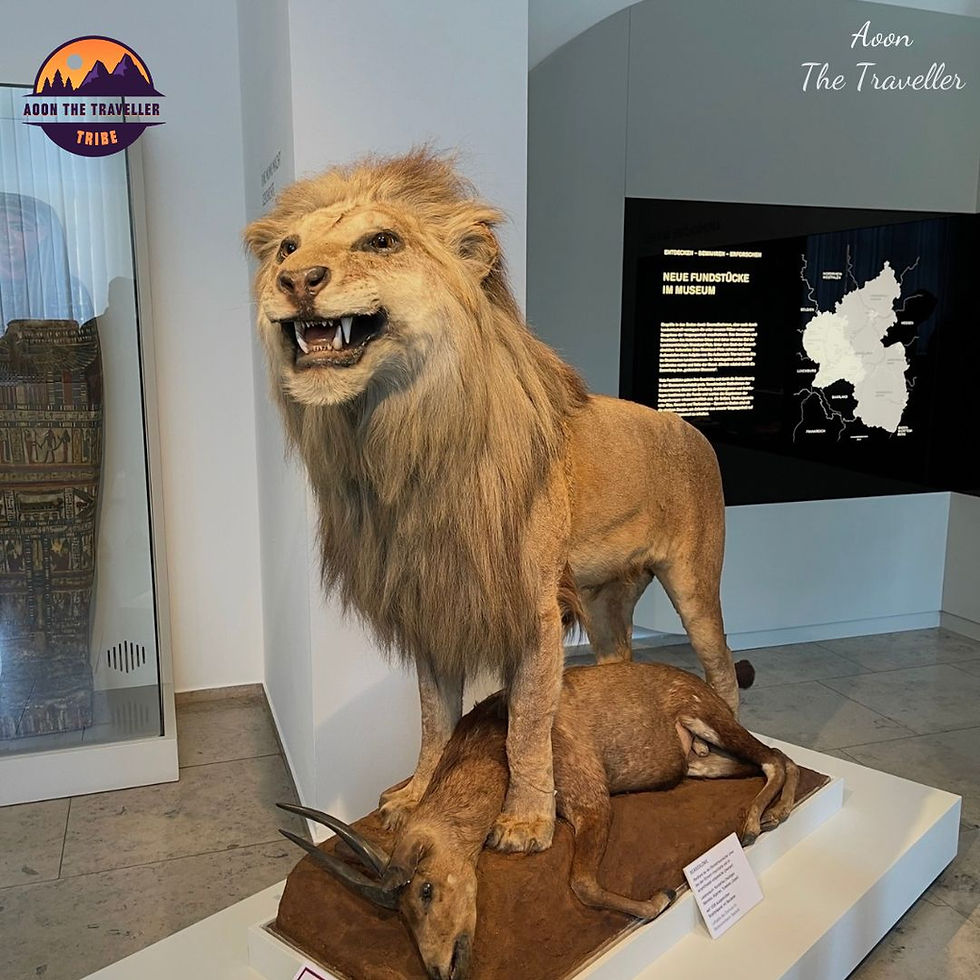
It features a world-class collection of Roman artifacts, including detailed mosaics (such as the famous Gladiator Mosaic), Roman tomb monuments, sculptures, and everyday objects from Roman Trier (Augusta Treverorum). You'll also find gold coins, jewelry, tools, and military gear from the Roman era.
Check out our blog about How to spend 48 hours in Strasbourg, France.

For us, the highlight of the visit is the 3D multimedia show, which uses light and projection to vividly tell the story of Roman Trier — an engaging experience for all ages.
Audio guides and guided tours are available in multiple languages, making the museum accessible to international visitors.

The museum is open from Tuesday to Sunday (closed on Mondays), but it’s best to check the official opening times before your visit.
After exploring the museum, you can also proceed towards the Petrisberg Viewpoint.
2. Petrisberg Viewpoint:
The Petrisberg Viewpoint has the most stunning view of Trier's old city, surrounding vineyards, and the Moselle Valley. You can also enjoy the beautiful sunset and golden hour from there.
Check out our blog about Things to do in Krakow, Poland.

The area used to be a home of the French and then German military barracks. You can see the skywalk platform, which is a sleek steel and glass structure.
You can also walk the trail, and it connects different viewpoints. There are also many cafes and restaurants where you can enjoy coffee and a meal.
After enjoying the viewpoint, you can also cruise on the Moselle River.

3. Moselle River Cruise:
You shouldn’t miss the Moselle River Cruise in Trier. It’s a relaxing and scenic way to experience the charm of the city. The boats offer both open decks and indoor seating, so you can enjoy the views in any weather.
Check out our blog about Explore Berlin like Locals - Berlin Travel Guide.

During the cruise, you’ll see panoramic views of Trier, including the Römerbrücke (Roman Bridge), the Porta Nigra, and the surrounding vineyards.

We took a 1-hour city cruise, but you can also choose a longer cruise that takes you to nearby towns such as Bernkastell-Kues or Cochem. Tickets can be purchased on-site or through local tourism offices.
Once you have a cruise, you can enjoy the Moselle River Promenade.
4. Moselle River Promenade:
The Moselle River Promenade is a beautiful riverside path where you can stroll along the riverbank and enjoy the surrounding nature.

You’ll often see locals walking or jogging, and you can also rent a bicycle to explore the scenic views along the Moselle River.
The oldest bridge in Trier, the Römerbrücke (Roman Bridge), is also located nearby and adds a touch of history to the peaceful setting.
Check out our blog about Things to do in Zagreb, Croatia.

We also visited the restaurant area at Zurlaubener Ufer, located right on the riverbank near the boat cruise docks. From there, we enjoyed a lovely sunset and had a relaxing dinner by the water.
Ending Note:
You can also plan a day trip from Trier to Saarburg — a charming hidden gem known for its picturesque scenery and relaxed atmosphere.

.png)











Comments